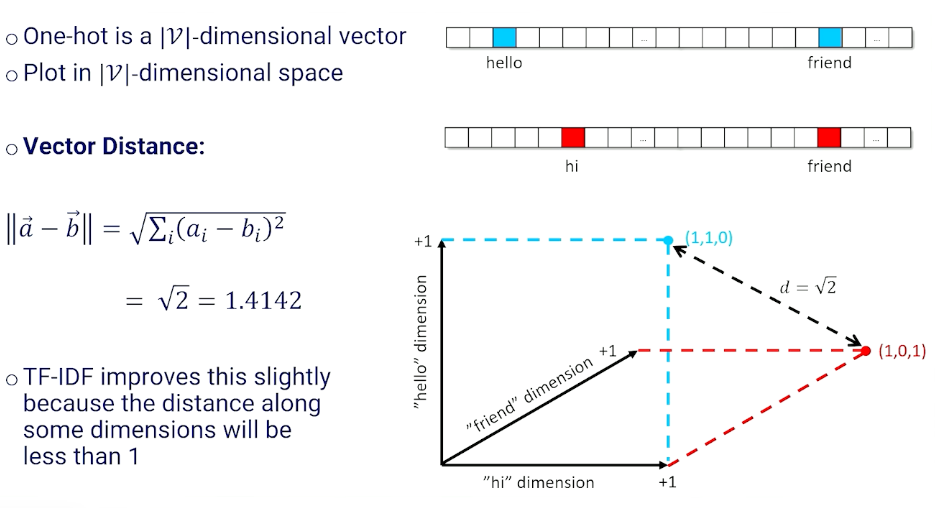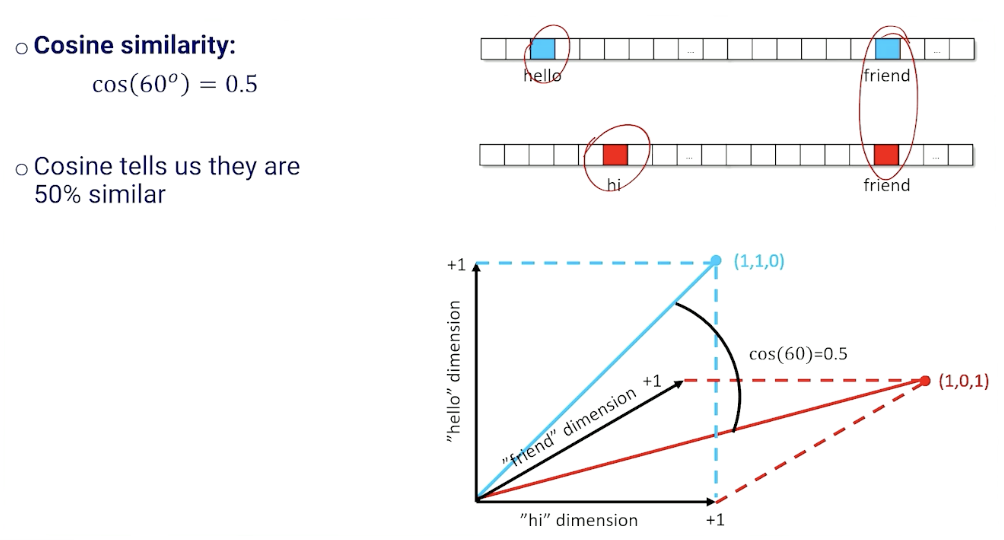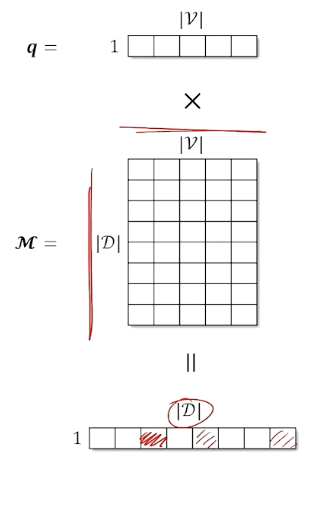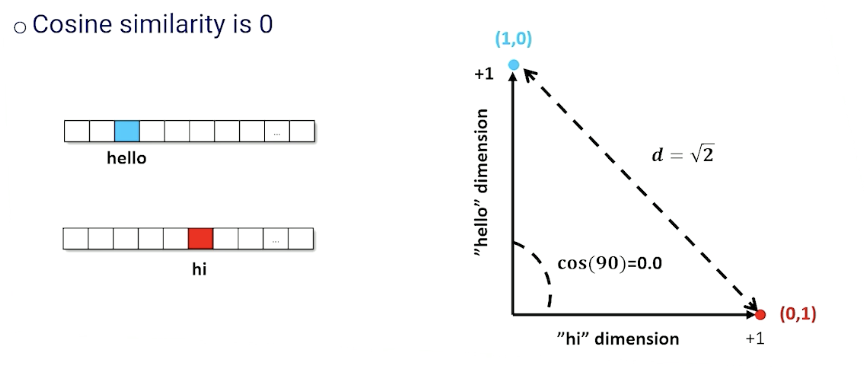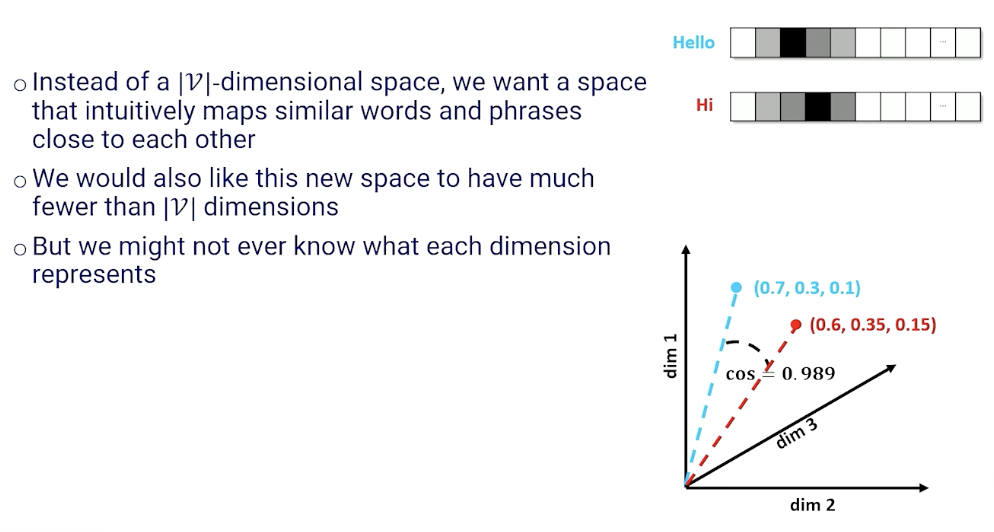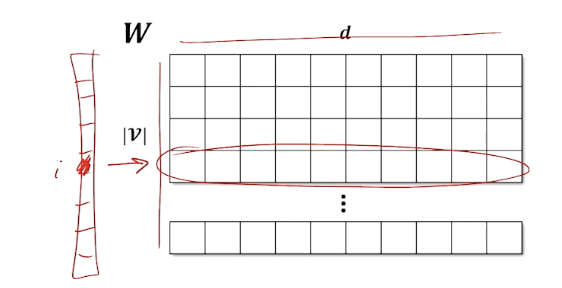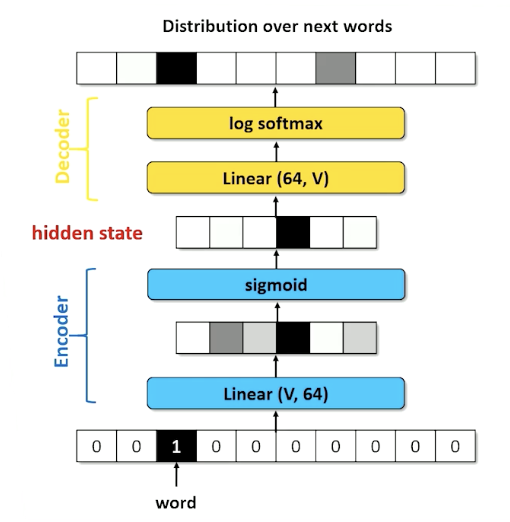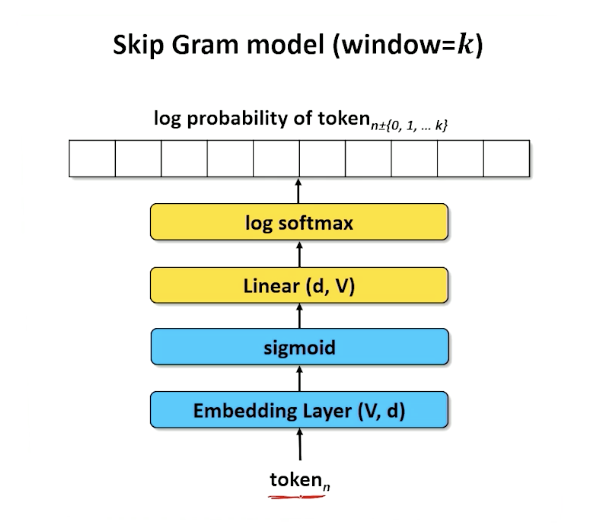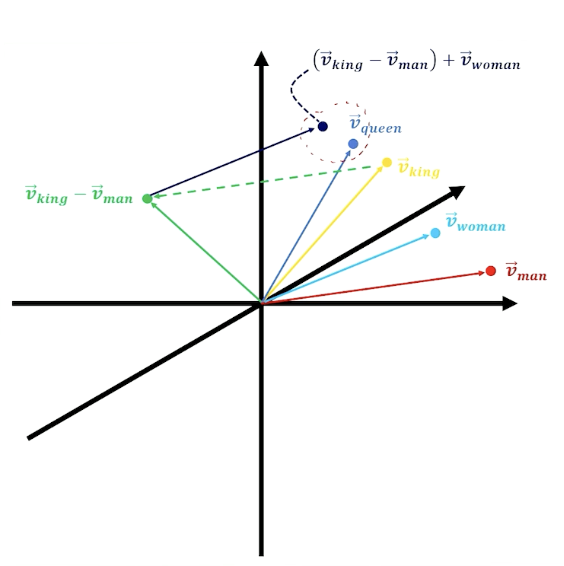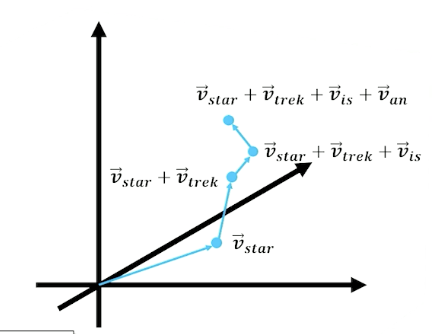Gt Nlp M5
Document Semantics
- Semantics: What word and phrase mean
-
Problem: Neural Networks don’t know what word means
- By extension neural network don’t know what a document is about
- Words are just one-hot vectors
So, How do we represent the meaning of a document?
- Multi-hot
- Set a 1 in each position for every word in a document.
- The values are the same but some words are more important than others.
- If you want to figure out if two documents are related to each other you want to rely on words that are effective at distinguishing documents
- Look for ways to determine which words are important
Term Frequency-Inverse Document Frequency
TFIDF - a specific technique trying to decide whether two document are semantically similar to each other without really having the semantics of words and documents themselves.
- Give weight to each word based on how important it is
Term frequency : If a word shows up frequently in a document, it must be more important than other words:
\[TF(w,d) = log(1+freq(w,d))\]- $freq(w,d)$ is how many times $w$ appears in document $d$
- The log forces the TF to grow very slowly as the frequency of a word gets larger.
Inverse Document Frequency : Words that are common in all documents are not very important
\[IDF(w,D) = log \bigg( \frac{1 + \lvert D \lvert }{1 + count(w,D)}\bigg)+1\]- $ \lvert D \lvert$ is number of documents
- $count(w,D)$ is how many documents in $D$ contains $w$
- As the count increases, the ratio goes towards 1.
So, TF-IDF:
\[TFIDF(w,d,D) = TF(w,d) \times IDF(w,D)\]- Apply TF-IDF to every word $w$ in every document $d$ to get a vector
In summary:
- TF-IDF provides a more nuanced document representation of a document than a multi-hot
- Next we look at how to compute document similarity and retrieve the most similar documents
Measuring The Similarity Documents
- Document Retrieval: given a word or a phrase (itself a document), compare the query to all other documents and return the most similar.
- Given two documents, represented as vectors, how do we know how similar they are?
One way is to use the vector distance:
Another way is to use the cosine distance:
Now, on document retrieval:
- Create a $1 \times \lvert \mathcal{V} \lvert$ normalized documetn vector for the query($q$)
- Create a normalized vector for every document and stack to create a $\lvert \mathcal{D} \lvert \times \lvert \mathcal{V} \lvert$ matrix $\mathcal{M}$.
- Matrix multiply to get scores
- Normalized the final vector
- This is the same as computing the cosine similarity
- Take the argmax to get the index of the document with the highest score (or get the top-k to return more than one)
There are still two issues:
- Require a $\mathcal{V}$ length vector to represent a document
- Does not capture the fact that some words are similar (“hi” vs “hello”)
Word Embeddings
The problem with TF-IDF just now is the way we index them in a vector even though they probably mean the same thing.
Instead of a $\lvert \mathcal{V} \lvert$ - dimensional space, we want a space that intuitively maps similar words and phrases close to each other. This is also known as embeddings:
So, how are we going to get these embeddings?
- Take a one hot (or multi hot) and reduce it to a $d$ -dimensional space where $d \ll \lvert \mathcal{V} \lvert $
- Use a linear layer with $\lvert \mathcal{V} \lvert \times d$ parameters $\mathcal{W}$
- Compress a one-hot into a d-dimensional vector
Why does this work?
- One-hot for the $i^{th}$ word selects a set of $d$ weights and all others are zeroed out
- These remaining weights are a $d$-dimensional representation of the indexed word
- Because we are multiplying by 1s and 0s, the $d$ weights $W_i$ are identical to the $d$-dimensional vector of activations at the next layer up.
Looking at the matrix of weights in the linear layer:
- Each row in $W$ is an embedding for each token in vocabulary
- One-hot selects the row
- Learn weights that capture whatever relationship we need
Word Embeddings Example
Recall the RNN architecture where we have an encoder layer:
We call the lienar compression layer in the encoding the embedding layer:
- token to one hot
- Linear from length $\lvert \mathcal{V} \lvert$ to $d$ length vector
- For simplicity moving forward, we are going to assume we can turn the word directly to an embedding.
- Embedding layer in an RNN learns weights of an affine (linear) transformation
- Whatever reduces loss in the output probability
- Must have compromises (words having similar activations)
- We hope those compromises map similar words to similar vectors
- Still no guarantee on semantic similarity
- Embedding layer is task specific
- Because ultimately it is being fed into a NN with a loss function for a specific task.
- Question: can we learn a general set of embedding?
Word2vec
Maybe we don’t need to know what each word means:
- Distributional semantics : a word is known by by the company it keeps
- Words that man approximately the same thing tend to be surrounded by the same word
- For example we always see king and queen together, maybe they mean something very similar in terms of semantics
- Again - the idea is we don’t need to know what the word mean if words with similar meaning have similar embeddings
Then the question is:
- How can we train an embedding to use this concept of distributional semantics
- Can a word be predicted based on surrounding words?
- The crown was left on the throne when the ???? went to bed at night.
- Probably king or queen is a reasonable choice; although we can’t quite tell which is better
- Can we predict the surrounding words based on a single word?
- Take out a word in the middle of a sequence and ask a neural network to guess the missing word
- Loss is the cross entropy of the probability distribution over words
Similarly, we can look at the opposite of the problem:
- Can a window of words be predicted based on the word in the middle of the window?
- Take a word and guess the words to the left and right
- Loss is the cross entropy of each blank given the word in the middle
- Break up into skip grams (bigram on non-adjacent tokens)
- E.g given word $w_t$, predict $w_{t-i}, w_{t+1}$ for some $i$.
- Predict each skip-gram separately
This is also known as the word2vec approach and there are actually two approaches to word2vec:
- continuous bag of words
- or skip grams
Let’s look at the continuous bag of words (known as CBOW) first, for a window of size $k$, what we are doing is we are taking a particular chunk of document and note that the document is missing a word in the middle.
So we take the $2k$ words off the left and right of the target word and asking the neural network to predict the missing word, in this case the embedding layer is $2k*V$ and outputs a/compresses it into $d$ dimension.
Now, let’s look at the skip gram model which is to look at a particular word and trying to guess the surrounding words
- So again, the word will be turn into a dimension of size $d$
- Because this is skip gram, we do not really care about the positions of the words but instead look at words with high activations.
- And the k highest activations are the words that are most likely to be in window around our $n^{th}$ word
- Doesn’t need to be a sentence, can be jumbled up - we are just looking for words
- Compute the entropy of each of the prediction matches the actual words we would find in a span taken from our actual document.
- The math side of things is omitted which is a little complicated.
Embedding
Let’s see what we can do for our embeddings, remember in either CBOW or skip gram we have the embedding layer
- We can extract teh weights from the embedding layer
- Each row is the embedding for a different token in the vocabulary
We can now do something interesting:
- such as computing the cosine similarity using the embedding.
- $cos(\vec{v}{queen}, \vec{v})$
- We can also do retrieval; find documents that are semantically similar
- Which Wikipedia document is most relevant to “Bank deposit”
- Chattehoochee river
- Great Recession of 2017
- Which Wikipedia document is most relevant to “Bank deposit”
- Can also do analogies - add and subtract word embeddings to compute analogies
- Georgia - California + peaches = ?
Again, to recap - words that represent similar concepts tend to be clustered closely in d-dimensional embedding space.
- Vectors can be added and subtracted
E.g King - man + woman = Queen
Also:
- Most points in embedding space are not words
- Search for the nearest discrete point
What about document embedding?
- Add each word vector
- Word vectors pointing in the same direction strengthen the semantic concept
- Normalize the resultant vector
- Value of any of the $d$ dimension is the relative strength of that abstract semantic concept
- Necessary for cosine similarity
In summary:
- Word2vec is a learned set of word embeddings
- Can either use continuous bag of words (cbow) or skip grams
- Word embeddings can be used in word similarity, document similarity, retrieval, analogical reasoning etc
- Text generation must learn an embedding that helps it predict the next word, but the embedding linear layer can be seeded with word2vec embeddings
- We will find embeddings in just about all neural approaches to natural language processing.
